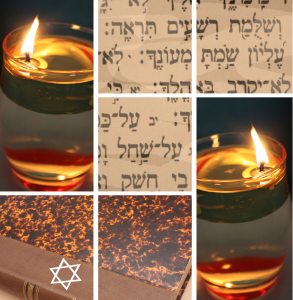In the world around us we observe the tremendous emphasis the world puts on clothing. Look at the number of websites and malls filled with clothing stores of all styles, types and nuances, all expressing slightly different (or greatly different) feelings. What we wear has a profound effect on the way people interact with us and how we feel about ourselves.
This has very deep roots in Judaism, going back to the creation story. Indeed, the first man and woman initially had no clothing. The Torah says they were not embarrassed, because before eating the forbidden fruit they had no inclination towards lust or evil. All parts of the body were equal. After eating the fruit the poison of the serpent entered their bodies and they began to be affected by lusts and desires. At that point the body took on a different context and needed to be covered in order for man and woman to remain spiritual. God gave them clothing to be covered from that point on.
Once the body needed to be covered, the manner by which it would be covered became important as well. The way one covers an object shows what importance one attaches to it. Something of great importance is usually covered very well until the time comes for it to be exposed, after which it is again covered in a most protective way. The covering will not only be protective; it will also be dignified and do service to the importance of the object in question.
At times the clothing – or guard – around something is its main source of honor. Take, for example, Buckingham Palace. Many more people go to see the changing of the palace guards than go to see the palace itself. In fact, it is the changing of the guard that brings honor to the palace. For that reason, the entire procession is carried out with great precision and requires much training in order that the entire event should bring the maximum honor to the palace and what it stands for. One guard marching out of tune or out of place would stand out like a sore thumb and minimize the honor of the entire procession.
In our palace, the Holy Temple, the priests (Kohanim) are sort of like the guards at Buckingham. To express proper honor to the King of the Universe, the guards in our Palace much wear vestments of royalty. The Torah calls the vestments and garments of the priests “holy garments for honor and glory.” When dressed with these proper, royal vestments the Kohanim exhibit the royalty of this place, the Temple, which is God’s palace.
This applies not only to the Temple service and the Kohanim; there is an application to every person. The Torah teaches us the man was created in the “image of God”. The Zohar, the source book of Kabbalah, explains this to mean that the body is a very hallowed creation, carrying within it a spark of Godliness and bit of all that was created before him in both the physical and spiritual worlds. Hence every human body is a type of palace, a place of royalty.
In the same way that it befits a royal palace to have guards stationed around it to confer the honor due to its royalty, so too our personal palaces, our bodies, deserve to be honored with respectable clothing surrounding it which show that what is inside is fit to be honored and protected.
From here we understand some of the laws and concept of “tznius”, which includes dressing modestly and respectfully. To expose those parts of the body which should be hidden is to make a statement that what is here is not important enough to be respectfully cloaked. To dress respectfully one brings, like the Kohanim in the Temple, honor and glory to their own bodies, lives and existence.
Sincerely,
Rabbi Yerachmiel Fried
